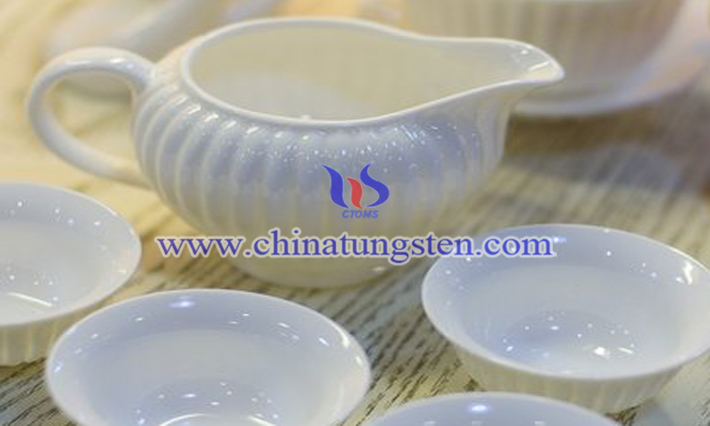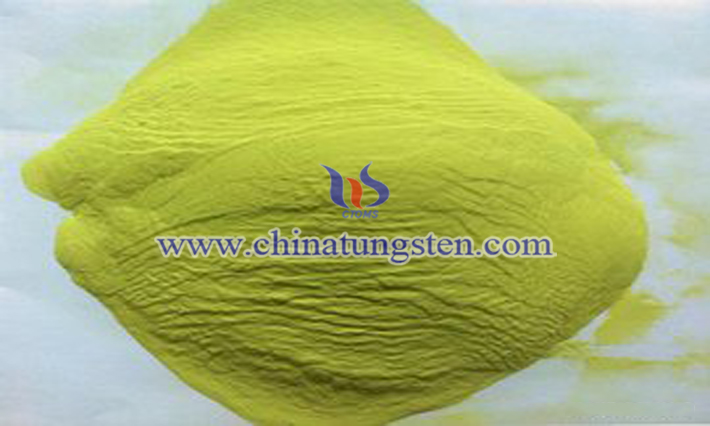Tungsten Trioxide Ceramics
- Details
- Category: Tungsten Information
- Published on Monday, 11 October 2021 16:01
Tungsten Trioxide ceramics are a metal cermet, which means that people add a certain proportion of Tungsten Trioxide into the clay for making ceramics to make ceramics with the advantages of high temperature resistance and non-friability. Compared with traditional ceramics, it not only retains the original advantages, but also increases the high temperature resistance, chemical corrosion resistance, good thermal conductivity and other advantages of tungsten.
Tungsten Trioxide is an essential high-tech material with the characteristics of nonlinearity, high dielectric constant, electrochromic, gas detection, chemical catalysis, etc. By applying these characteristics to ceramics, functional ceramics and ceramic membranes can be prepared, such as pressure sensitive ceramics, ceramic capacitors, photochromic ceramic membranes, gas sensitive ceramics, photocatalytic degradation ceramic membranes, battery electrode ceramic materials, microwave absorbing those, new high-temperature thermoelectric ceramics and their membranes.
 According to reports, most ceramic materials are oxides, nitrides, borides and carbides. Commonly used ceramic materials include clay, alumina, and kaolin. Generally, ceramic materials have higher hardness, but poor plasticity. For example, soft porcelain and frit porcelain are difficult to produce (poor plasticity and dry strength of the green body, serious deformation during firing), with a higher cost and lower yield.
According to reports, most ceramic materials are oxides, nitrides, borides and carbides. Commonly used ceramic materials include clay, alumina, and kaolin. Generally, ceramic materials have higher hardness, but poor plasticity. For example, soft porcelain and frit porcelain are difficult to produce (poor plasticity and dry strength of the green body, serious deformation during firing), with a higher cost and lower yield.
 Tungsten Trioxide ceramics can improve the production difficulty in actual operation. For example, compared with traditional ceramics, it can not only improve the hardness of ceramics, reduce the probability of deformation in the firing process, and then improve production efficiency; It also has high strength and good thermal stability, can adapt to modern mechanized washing, and can pass the sudden change of temperature from refrigerator to oven smoothly.
Tungsten Trioxide ceramics can improve the production difficulty in actual operation. For example, compared with traditional ceramics, it can not only improve the hardness of ceramics, reduce the probability of deformation in the firing process, and then improve production efficiency; It also has high strength and good thermal stability, can adapt to modern mechanized washing, and can pass the sudden change of temperature from refrigerator to oven smoothly.
It is understood that the traditional ceramic atmospheric sintering process will lead to the blackening of Tungsten Trioxide samples. However, sintering enough oxygen in the oxygen atmosphere can ensure that tungsten ions will not be reduced to a low valence state, and can obviously improve the blackening problem of Tungsten Trioxide.
- Tungsten Oxide Manufacturer & Supplier, Chinatungsten Online: www.tungsten-oxide.com
- Tungsten News & Prices of China Tungsten Industry Association: www.ctia.com.cn
- Molybdenum News & Price: news.molybdenum.com.cn
- Tel.: 86 592 5129696; Fax: 86 592 5129797; Email: sales@chinatungsten.com



 sales@chinatungsten.com
sales@chinatungsten.com